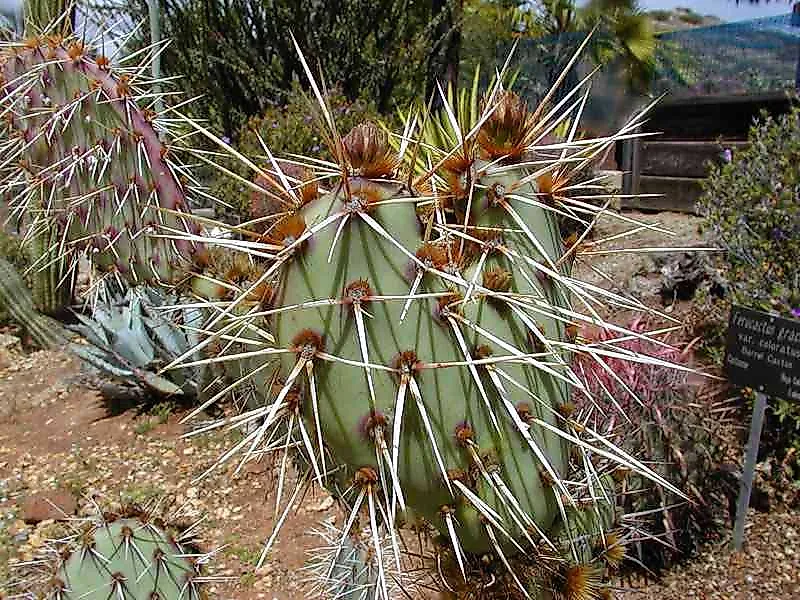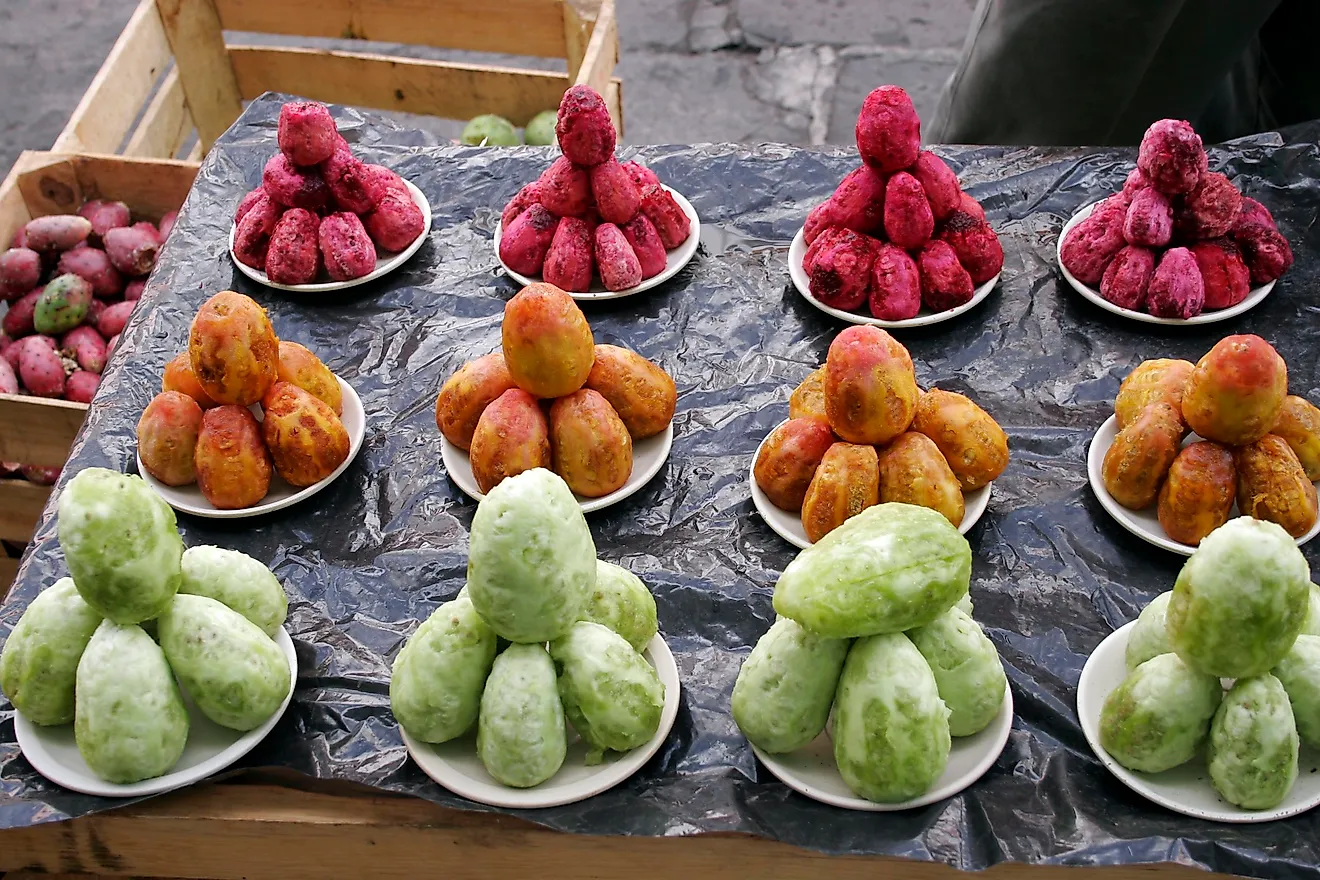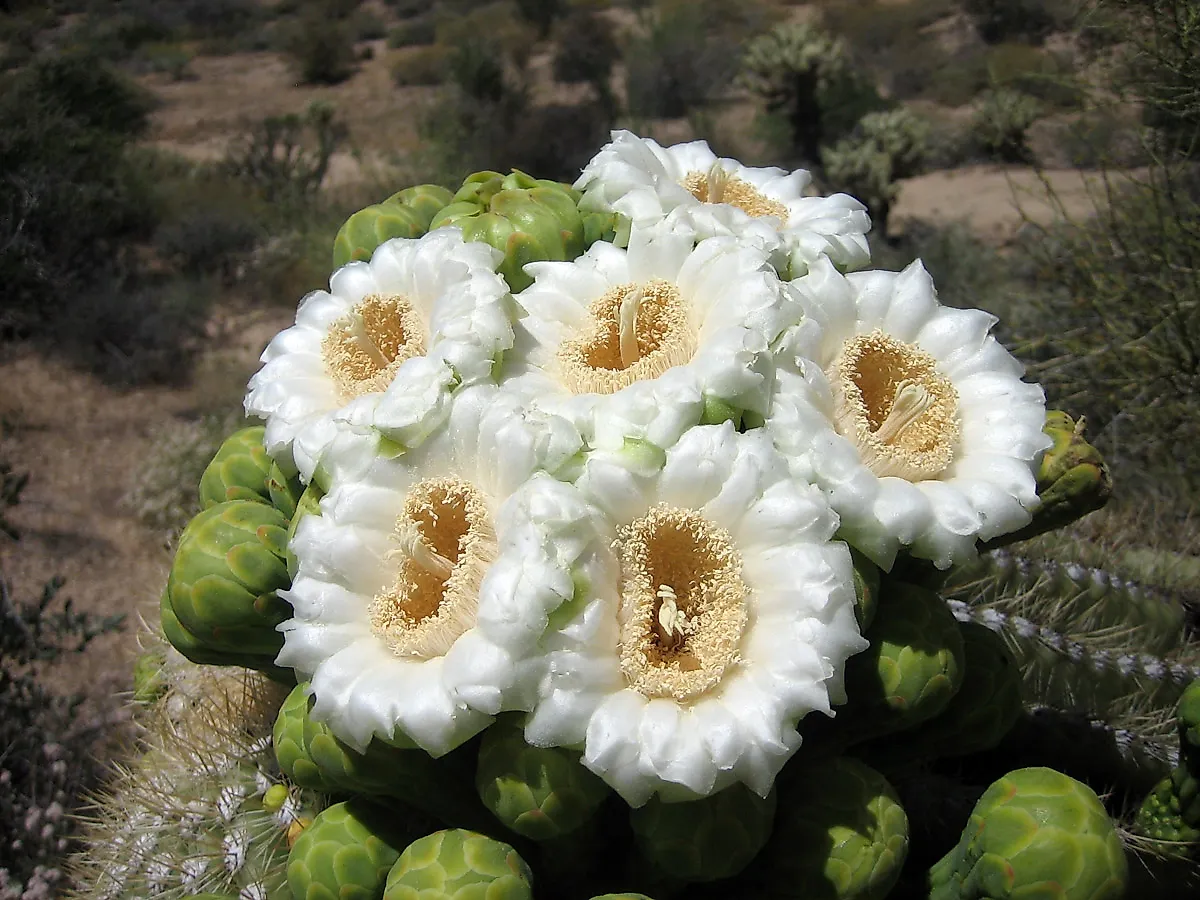Cactus, Flora Of The Desert

5. Physical Description
Cacti are plants belonging to the family Cactaceae and are usually well adapted to survive in arid conditions. Most cacti are succulents possessing broad, fleshy stems that store water. Cacti lack leaves, but have long spines instead, and tend to be genuinely thorny. While the small surface area of spines ensure little water is lost to the environment by evapotranspiration, the thick stems accept the duty of the leaves and perform photosynthesis. There are around 127 genera of cacti represented by about 1750 species. The size and shape of these species vary greatly.
4. Uses of Cacti by Humans

Some species of cacti like the Indian fig cactus has for long been used as an important food source for indigenous people and fodder for their livestock. Fleshy fruits of these plants are also edible. Some species of cacti are believed to possess chemicals that act as psychoactive agents. Ornamental decoration in homes and gardens also utilize cacti. Some species of cacti are also utilized by the pharmaceutical industry to produce medications.
3. Habitat and Range
Cacti are native to the New World countries. They are found in a wide variety of habitats in these countries. The cacti species that are adapted to survive in arid environments are found in the drought-prone arid areas of Mexico, south-western US, and parts of South America in the south-western Andes region. Cacti also grow in moist environments of Brazil, Bolivia, and some Central American countries. Here, they are found in the Atlantic forests, coastal mountains, and other wetter habitats. Only one species of cacti, the Rhipsalis baccifera is found in some other parts of the world like Africa and Sri Lanka. Many of the species have been introduced elsewhere in the world by man. Thus, Australia, Mediterranean regions, now have cacti growing in their natural habitats.
2. Threats and Conservation
A study from the International Union of Nature has found that of 1478 species of cacti, 31% are threatened. The primary threats leading to the declining cacti numbers are over-collections, overgrazing, and developmental activities in cacti habitat. All species of Cactaceae are thus part of the Convention on International Trade in Endangered Species of Wild Fauna and Flora.
1. Reproduction and Life Cycle

Birds, butterflies, bees, moths, bats, etc., pollinate the flowers of cactus species. Many species of cacti have evolved to produce specific traits that attract the pollinators to these species. For example, cacti with butterfly pollinators produce vibrant colored blossoms while those pollinated by moths produce white or pale colored flowers. The fruits produced after fertilization are either fleshy or dry. Birds who are tempted to feed on the sweet-tasting fruits are unknowingly responsible for seed dispersal. As they feed on the fruits, the seeds pass through their digestive system and are deposited on the ground via bird droppings. Also, the spiny fruits of some cacti get attached to the fur of wandering animals and are dispersed far and wide.











